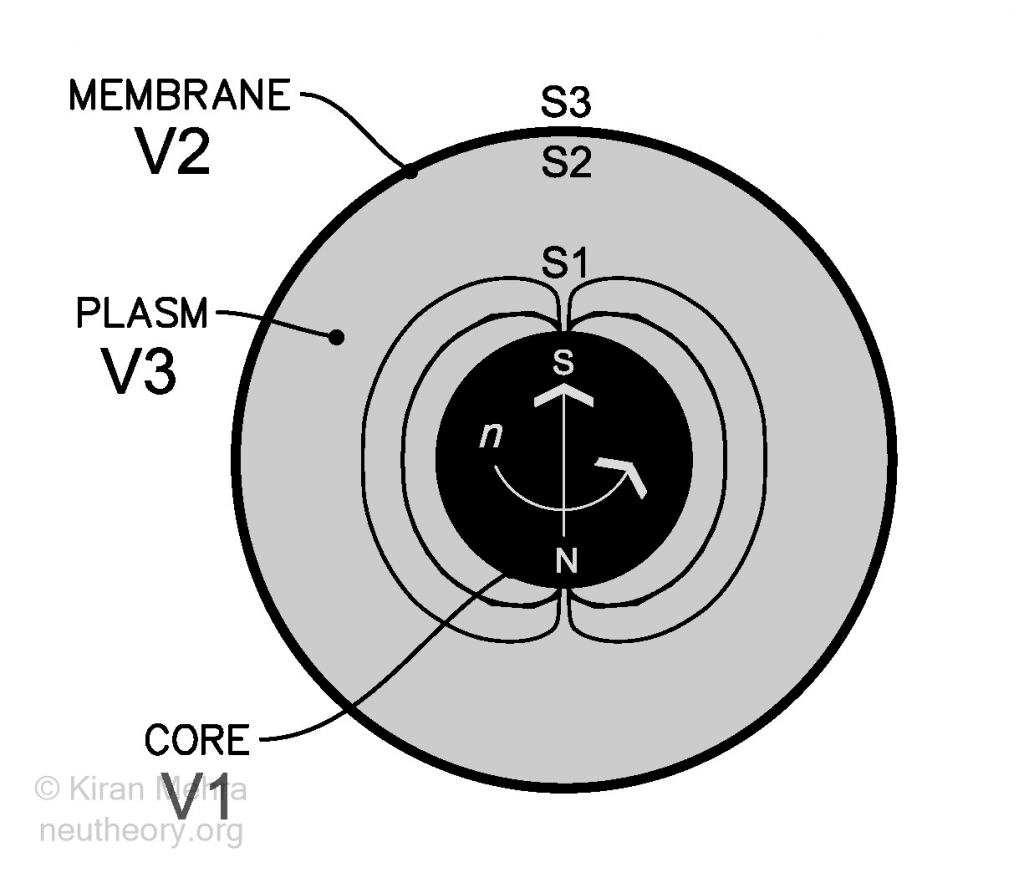The Laws of Nature
Natural Law
Nature follows rules of behavior that we call natural law. A natural law is something that is invariant, forbidden, required or allowed with conditions. The Neu Theory model requires that all we observe in nature follow three simple rules:
The Prime Law of Nature
The conservation of movement, number and form is the Prime Law of Nature. This general law establishes the rules that govern all physical phenomena. No violations to the rules are allowed.
The Rules of Movement
- There are two quantum forms of natural movement. They are called absolute movements, meaning, they have an invariant intrinsic quantity, and physical properties, that are forever fixed. The two absolute movements are equal in value. The two absolute movements are pre-existing primal forms of energy in nature that are conserved, and the original source of all other physical forms and movement that we observe. They are:
• quantum spin absolute movement/energy (spinergy)
• quantum rise absolute movement/energy (risergy) - The two absolute movement/energy forms must remain at the “fixed” speed of light, which in physical reality is hypothesized as a perpetual uniform acceleration.
- The two absolute movement/energy forms cannot be created or destroyed. They can only be transformed without loss.
- One quantum of absolute movement is defined as equal to one quantum of energy. (≈ 939.565 Mev, ≈ 1.505 x10-10 Joules)
- The two absolute movement/energy forms can only add.
- The direction of each absolute movement/energy form is one-way, right angle to the other, and cannot change.
- One absolute movement/energy form cannot change into the other.
- Only equal portions of the two absolute movement/energy forms can link and de-link.
The Rules of Number
- N is an invariant real number of identical physical objects (n), and is equal to the Cosmic Population. N can only be empirically estimated. The absolute value of n is:
n = 1/N - n’s cannot be created or destroyed.
- n’s can only add. All n’s must add up to N.
- Each n is made from one quantum unit of absolute spin movement/energy (939.565 Mev) plus one quantum unit of absolute rise movement/energy (939.565 Mev) that are linked together making three quanta of physical matter with a total mass equal to ∼1.674 929 351 x 10-27 kg.
- All fractions of n must add up to one.
- The identity of n is the 3 part neutron cell which the Neu Theory model uses as the primal form, and natural quantum unit of atomic matter (1.000 000u) with an invariant fractional distribution of atomic mass between the three elementary matter quanta equal to 0.998 623u + 0.000 544u + 0.000 833u.
- There are two physical states of n, the neutral a-state and the electric b-state. An increase in one state requires a decrease in the other. Both states must add up to N.
The Rules of Form
- The neutron matter cell is n, the primal/prototype object of physical form.
- The neutron cell has an invariant three part structural topology with 3 primal surfaces that define 3 primal volumes of matter.
- The number of all primal surfaces and volumes in nature must be conserved.
- Topological relationships between the primal parts must be conserved after transformation between the two physical states.
- Physical forms can only add.
- Addition can be fermionic, bosonic, bi-polar, and vector.
Uniform Universal Acceleration of the Speed of the Two Absolute Movements
The acceleration of nature’s speed limit
- Perpetuity
- Fixed Value
- Smoothness
- In-line Direction
- Synchronization
The speed of the two absolute movements is the same as the observed “speed of light” c @ 299 792 458 m/s. However, absolute movement is not a speed, it is an acceleration. The value of this acceleration a as compared to c must be emperically determined.
The Certainty Principle
The conservation of number by nature
- All fractions of n must add up to one
- All ones must add up to N

